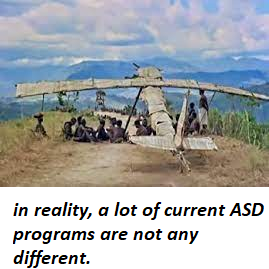Rural & Small Community Air Service
In Many Cases, The Aircraft No Longer Exist
It’s a common thread in the air service development field. Gaining more air service access – or any air service access – is the immediate goal for smaller communities. It’s postured as an almost do-or-die economic situation. No service at the local airport means no economic growth is the battle cry.
There are newly-formed task forces and cross-community coalitions to convince congress to jack up Essential Air Service funding to “lure” more airlines into town. SCASD grants are filed, albeit mostly at communities that are not really “small,” with high hopes of getting a flight to a pre-determined destination, almost always with a chart implying that the desired service will tend to lower airfares, which for all intents is something completely lost in the space of economic ignorance.
Just Flights. Not Access. The questions of specifically where the airline will come from, or what the service will actually access are often not in evidence. In these cases, the communities are misled into the belief that “air service” is like running water. You have flights or you don’t. Having them – going wherever – is the final objective.
To be sure, the civic energies are laudable, but the goals are too often crafted in void that is completely outside of the economics and consumer realities of air transportation. Most of these efforts are doomed to fail because they are crafted without a clear understanding of the future of air transportation as a consumer communication channel.
Now there is another factor that most small community ASD programs ignore: fleet trends.
One of the factors that sets Boyd Group International apart in assisting clients plan for the future is that we are involved in fleet trends and airline fleet strategies. Most ASD programs just assume that the right planes will be there, as long as they can make a great case for the airport at the next speed date conference.
Take A Gander. The Planes Are Gone. What they miss is that the fleets of airliners that could accomplish this – even if the traffic were there – no longer are in operation, and airline economics are going in the wrong direction to reverse this.
Sadly, that is becoming more and more akin to primitives creating cargo cults in the South Pacific after World War Two. They built stick airplanes hoping to attract back what they experienced in the heat of those years, with huge amounts of wartime commerce. But those airplanes no longer exist because the economic situation has changed.
 It is almost precisely the same situation today in a lot of air service development programs. The sad fact is that the airplanes that these projects hope to attract no longer exist. Today the stick models are replaced with studies and analyses and heat maps and task forces and SCASD grants produced in largely futile efforts to lure back airplanes that aren’t there anymore.
It is almost precisely the same situation today in a lot of air service development programs. The sad fact is that the airplanes that these projects hope to attract no longer exist. Today the stick models are replaced with studies and analyses and heat maps and task forces and SCASD grants produced in largely futile efforts to lure back airplanes that aren’t there anymore.
The raw economics of crew costs, fuel costs, maintenance costs, airport costs, regulatory costs have already put turboprops and small jets into the smelter. The financial nut cannot be met with just 30 or 40 or 50 seats generating revenue.
Now, these skyrocketing operational costs are going to start to affect the economics of 76 seat jets.
Drop the blinders – this is raising the bar regarding the amount of revenue that needs to be generated on a per-flight basis at any airport. Simply stated, that means any air service with a frequency to keep folks using the local small community airport needs to have demand that increasingly the immediate region cannot sustain.
As was just covered in the latest Touch & Go newsletter, the emerging economics of passenger air service cannot be ignored any longer. At the moment, the capacity floor for major airline access is moving to 76 seats. In the next three years, as labor and fuel costs continue to rise, that floor will move toward 120 seats – an A319 will be gravitating to be the smallest piece of iron in the fleet. And there are no smaller airliners in the pipeline. Can you say “regionalization” folks?
Cutting to the bottom line, the hard fact is that small communities need to move aggressively to rethink the economic opportunities that exist for the local airport. Increasingly, it will mean looking beyond scheduled passenger service. Regionalization of air access is in progress as consumers find better alternatives at larger distant airports.
More consultant voodoo won’t change this any more than the efforts undertaken by the folks in rural New Guinea. At least the stick airplane models won’t choke the local land fill.
Air Service In 2027 is the focus of this week’s Touch & Go. It briefly illuminates where airline trends are going based on fundamental structural shifts in the airline industry.
If you’re not on the distribution list, hit the contact button and we’ll include you with the over 500 aviation thought leaders who get new perspectives at the end of every week.